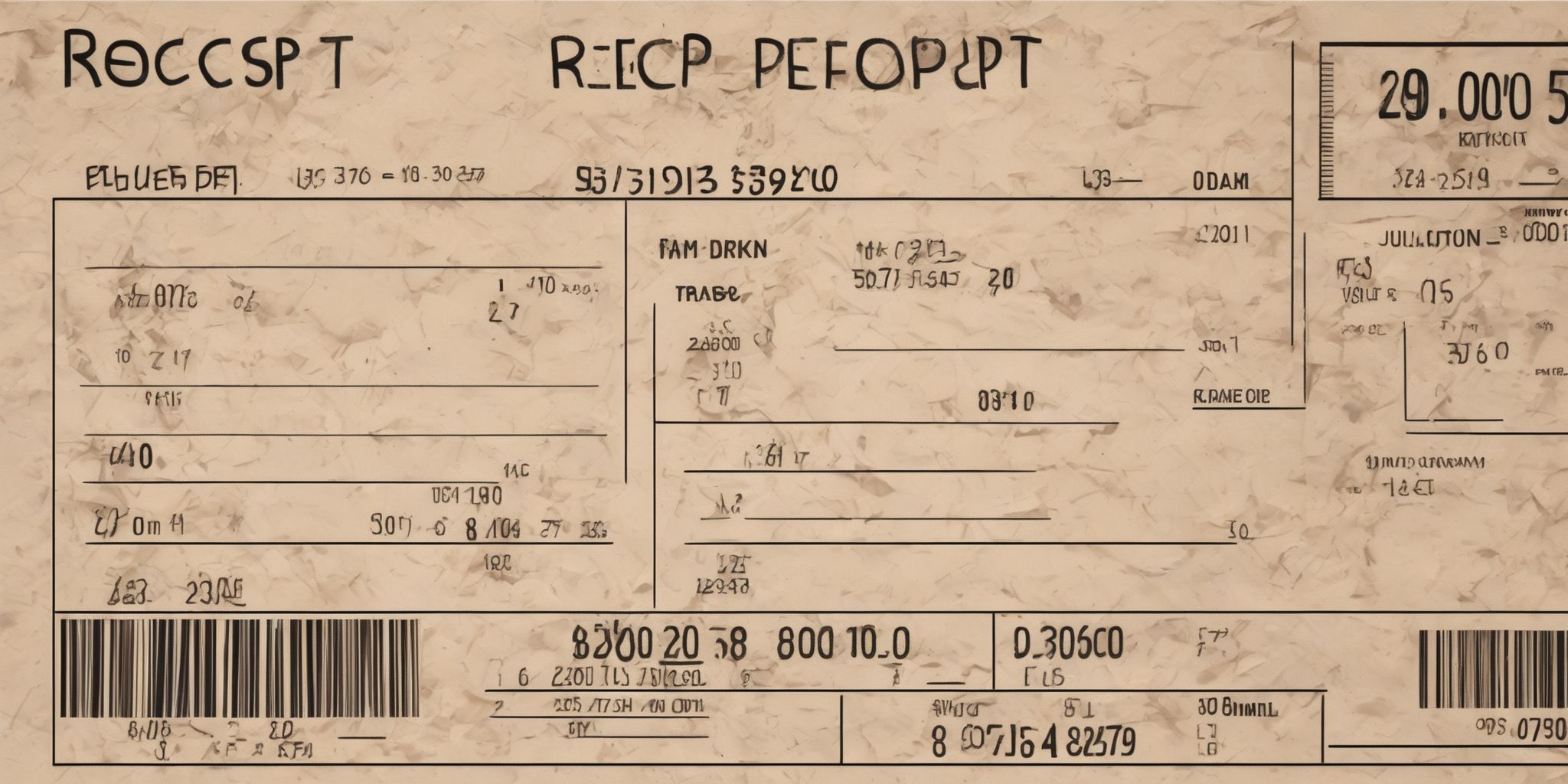How Budgeting Software Can Simplify Your Finances
Are you tired of drowning in a sea of receipts, bills, and financial spreadsheets? Does the mere mention of budgeting make you cringe? If so, you're not alone. Managing personal finances can be overwhelming and time-consuming, but luckily, technology is here to lend a helping hand.
In this article, we'll explore how budgeting software can simplify your finances, leaving you with more time to enjoy the things that matter most in life. So, grab a cup of coffee and get ready to discover a smarter, streamlined approach to managing your money.
Overview of personal finances
Managing personal finances can be a complex task for many individuals. Obtaining a clear overview of your financial situation is the first step toward effective budgeting. An overview of personal finances involves understanding your income, expenses, debts, and savings. This includes tracking your sources of income, such as salary or investments, and categorizing your expenses, such as housing, transportation, and entertainment.
By having a comprehensive understanding of your financial picture,you can identify areas where you may be overspending or opportunities to save. Budgeting software can simplify this process by automatically consolidating and categorizing your financial data, providing you with a comprehensive overview of your finances in one centralized location.
Need for effective budgeting
Effective budgeting is indispensable for managing personal finances efficiently. It allows individuals to prioritize their spending, track expenses, and achieve their financial goals. By using budgeting software, you can streamline the process and simplify your financial management. The need for effective budgeting arises from:
- Gaining a clear understanding of your income and expenses
- Identifying unnecessary expenditures and areas for potential savings
- Avoiding debt accumulation and fostering responsible financial habits
- Planning for future expenses, such as emergencies, vacations, or retirement
- Enabling informed decision-making and ensuring financial stability
Budgeting software empowers you to take control of your finances by providing insights, automating tasks, and offering valuable financial analysis. It transforms the budgeting process into a more manageable and effective endeavor.
Benefits of Budgeting Software
Automated expense tracking
Automated expense tracking is a game-changer when it comes to managing your finances with budgeting software. It eliminates the hassle of manually entering every expense, saving you time and effort. With just a few clicks, transactions from your bank accounts and credit cards are automatically imported and categorized for you. This not only ensures accuracy but also allows you to quickly get an overview of your spending habits.
Whether it's tracking monthly bills, monitoring discretionary spending, or identifying areas where you can cut back, automated expense tracking provides real-time insights to help you make informed financial decisions and stay on top of your budget.
Eliminating manual tracking
One of the standout benefits of using budgeting software is eliminating the need for manual tracking. With manual tracking, you have to manually record all your income and expenses, which can be time-consuming and prone to errors. Budgeting software automates this process, syncing with your bank accounts and credit cards to import transactions automatically.
This saves you the hassle of inputting every transaction manually and allows you to have an up-to-date and accurate view of your finances at all times. It also reduces the risk of missing any expenses or income, ensuring that your budget remains comprehensive and reliable.
Accurate categorization and analysis
Accurate categorization and analysis are fundamental aspects of budgeting software. It takes the burden off users to manually track and categorize their expenses, saving time and reducing errors. The software automatically organizes transactions into relevant categories, such as housing, transportation, and groceries. This functionality allows users to gain insights into their spending patterns and identify areas where they can cut back or allocate more funds.
For instance, it can reveal that asignificant portion of the budget is being spent on dining out, prompting users to reassess their eating habits. By providing clear visualizations and reports, budgeting software empowers users to make informed financial decisions and stay on top of their financial goals.
Real-time updates and notifications
Real-time updates and notifications provided by budgeting software are invaluable for managing your finances efficiently. These features alert you whenever there are changes in your financial status, ensuring you stay on top of your spending habits. For instance, you can receive notifications when you exceed a budgeted expense category or when there are unusual transactions in your bank accounts. These real-time updates enable you to make immediate adjustments and avoid overspending.
By stayinginformed in real-time, you can proactively address any financial challenges and maintain better control over your budget.
Goal setting and financial planning
Goal setting and financial planning are integral components of effective budgeting software. With the ability to create and track financial goals, individuals can map out a roadmap for their financial success. This feature allows users to set specific targets, such as saving for a down payment or paying off debt, and monitor their progress over time. The software provides insights and recommendations to help users stay on track and adjust their spending habits accordingly.
By aligning their budget with their long-term objectives, individuals can make informed financial decisions and work towards achieving their goals.
Creating and tracking financial goals
Creating and tracking financial goals is an integral part of effective budgeting software. It allows users to set specific targets and monitor their progress towards achieving them. By clearly defining goals, such as saving for a vacation or paying off debts, individuals can stay motivated and focused on their financial objectives. Budgeting software provides features like goal tracking, progress charts, and reminders, making it easier to stay on track.
For example, users can visualize their progress towards saving a certain amount each month or reducing their spending in a particular category. Such tools provide actionable insights and empower users to make informed decisions to achieve their financial goals.
Mapping out a roadmap for financial success
Mapping out a roadmap for financial success is a crucial aspect of using budgeting software. With the ability to set financial goals and track progress, individuals can create a strategic plan to achieve their desired outcomes. This includes determining how much money to allocate towards savings, investments, debt repayment, and other expenses. By having a clear roadmap in place, budgeting software users can make informed decisions about their finances and stay on track towards their objectives.
Providing insights and recommendations
Budgeting software goes beyond simple expense tracking to provide valuable insights and recommendations. By analyzing your income, expenses, and spending patterns, it can identify areas where you can cut costs or save money, helping you optimize your budget. These insights can range from suggesting ways to reduce unnecessary spending to identifying potential hidden fees. Moreover, budgeting software can provide personalized recommendations based on your financial goals.
For instance, it may suggest increasing your savings for an upcoming vacation or contributing more towards your retirement fund. This actionable advice empowers you to make informed financial decisions and stay on track towards your goals.
Simplified expense management
Simplified expense management is another advantage of using budgeting software. It streamlines bill payments, ensuring they are paid on time and avoiding late fees. The software also helps track subscriptions and recurring expenses, sending reminders for upcoming payments. With automated expense categorization, users can easily see how much they spend on different categories like groceries, entertainment, or transportation.
This makes it easier to identify areas where they can reduce spending and save money.
Streamlining bill payments
One major benefit of using budgeting software is streamlining bill payments. With budgeting software, you can automate your bill payment processes, saving you time and ensuring that you never miss a payment. By linking your bank accounts and bills to the software, you can set up automatic payments for recurring bills, such as utilities or subscriptions. This helps avoid late fees and keeps your finances organized.
Additionally, budgeting software can provide reminders and notifications for upcoming bills, keeping you informed and in control of your expenses. Streamlining bill payments simplifies your financial management and reduces the risk of missed payments.
Tracking subscriptions and recurring expenses
Tracking subscriptions and recurring expenses is a valuable feature offered by budgeting software. It allows users to easily monitor their ongoing financial obligations and avoid overspending. By inputting subscription details into the software, users can receive timely reminders before payment due dates. This helps prevent missed payments and potential late fees.
Additionally, budgeting software can analyze subscription expenses over time, providing insights into total expenses and potential savings.
For example, users can identify subscriptions they no longer use and cancel them to reduce monthly costs.
Automated expense categorization
Automated expense categorization is a valuable feature offered by budgeting software. It simplifies the process of tracking and analyzing your expenses by automatically classifying transactions into predefined categories. Here's why it's beneficial:
- Time-saving: Instead of manually categorizing each expense, the software does it automatically.
- Accuracy: With machine learning algorithms, it consistently assigns the correct category to each transaction.
- Insights: Categorized expenses provide a clear overview of your spending habits, allowing you to identify areas where you can cut back or allocate more funds.
- Budgeting accuracy: By accurately categorizing expenses, you can create realistic budgets for different spending categories.
- Customization: Most budgeting software allows you to customize and add new categories to suit your specific needs.
Choosing the Right Budgeting Software
Identifying personal finance needs
Identifying personal finance needs is the first step in finding the right budgeting software. Assess your income and expense complexity to understand the level of financial tracking required. Consider factors like frequency of transactions and the need for detailed categorization.
Additionally, think about your financial goals and priorities, whether it's reducing debt, saving for a specific purchase, or planning for retirement. For instance, if you have multiple income sources and complex investments, you may need a software with advanced features. Understanding your unique financial situation will help you choose a budgeting software that aligns with your specific needs.
Assessing income and expense complexity
Assessing income and expense complexity is an important factor to consider when choosing budgeting software. Take into account the number of income sources and their variability, as well as the diversity and frequency of expenses. For instance, freelancers or individuals with multiple jobs might benefit from software that allows them to easily track and categorize their different income streams.
Similarly, if you have various types of expenses, such as bills, subscriptions, loans, and investments, it is crucial to find software that can handle and categorize these complexities accurately. Understanding the complexity of your finances will help you select a budgeting software that effectively meets your needs.
Considering financial goals and priorities
Considering financial goals and priorities is an important aspect when choosing budgeting software. It allows you to align your software selection with your specific needs and objectives.
For example, if saving for a down payment on a house is a priority, you might look for software that offers goal-tracking features or helps you allocate funds towards your target. Similarly, if you have long-term investment goals, finding software that integrates investment tracking and offers insights on portfolio performance can be beneficial. By evaluating your financial goals and priorities, you can ensure that the budgeting software you choose is tailored to your unique circumstances, helping you achieve your desired outcomes.
Evaluating key features
When evaluating budgeting software, consider its user-friendly interface and ease of use. A software that is intuitive and easy to navigate allows for a smoother budgeting experience. Compatibility across devices and platforms is another crucial factor. Being able to access your budgeting tools on your phone, tablet, or computer ensures convenience and flexibility. Integration with bank accounts and financial institutions is also important.
With this feature, you can automatically import transactions, saving time and effort. Look for software that offers these key features to streamline your budgeting process.
User-friendly interface and ease of use
A user-friendly interface and ease of use are important factors to consider when choosing budgeting software. A well-designed and intuitive interface ensures that users can navigate the software easily and efficiently. It should be easy to input and categorize expenses, set budget goals, and track financial progress. The software should provide clear and concise visuals, such as charts and graphs, to help users understand their financial data quickly.
Additionally, features like automatic syncing with bank accounts and transaction categorization can save users time and effort in manual data entry. A user-friendly interface ultimately enhances the overall user experience, making budgeting more accessible and enjoyable.
Compatibility across devices and platforms
When considering budgeting software, it is important to prioritize compatibility across devices and platforms. This allows users to access their financial information and manage their budgets seamlessly, regardless of the device they are using.
For example, having a mobile app that syncs with a desktop version ensures easy access to finances on-the-go.
Additionally, compatibility across different operating systems and web browsers ensures a broader range of users can utilize the software without limitations. This flexibility empowers individuals to stay on top of their budgets and make informed financial decisions wherever they are.
Integration with bank accounts and financial institutions
Integration with bank accounts and financial institutions is a valuable feature of budgeting software. It allows users to seamlessly connect their accounts, providing a holistic view of their finances. By securely importing transaction data, the software can automatically categorize expenses and track income. This eliminates the need for manual entry and ensures accuracy. Integration also enables real-time updates, keeping users informed of their financial status.
Additionally, it can facilitate bill payment automation and offer insights on spending patterns.
Budgeting software options
When it comes to budgeting software, there are several options available to suit various personal finance needs. For instance, some budgeting software focuses on providing a comprehensive and free solution for tracking expenses and managing budgets. Others prioritize helping users achieve their financial goals by offering features that enable goal setting and providing insights and recommendations to stay on track.
Additionally, some budgeting software options integrate budgeting with investment tracking, allowing users to manage both aspects in one platform. Finding the right budgeting software involves assessing personal finance complexity, considering financial goals, and evaluating key features such as user-friendly interfaces, compatibility across devices, and integration with financial institutions.
Mint: A free and comprehensive budgeting solution
Mint is a popular budgeting software that offers a comprehensive set of features. It allows users to connect their financial accounts to track expenses and income automatically. With its user-friendly interface, Mint simplifies budget creation and provides visualizations for better financial understanding. It also offers alerts and reminders to help users stay on track with their financial goals.
Additionally, Mint provides an overview of financial trends and insights, making it easier to identify areas for improvement.
You Need a Budget (YNAB): Focusing on financial goals
You Need a Budget (YNAB) is a popular budgeting software that focuses on helping users achieve their financial goals. With its user-friendly interface and robust tools, YNAB provides a practical approach to budgeting. It encourages users to assign every dollar a specific purpose, such as paying off debt, saving for a specific goal, or building an emergency fund. By prioritizing financial goals and tracking progress regularly, YNAB helps users stay focused and motivated.
Its goal-focused approach ensures that every budget decision aligns with long-term objectives, ultimately leading to financial success.
Personal Capital: Combining budgeting and investment tracking
Personal Capital is a budgeting software that goes beyond tracking expenses. It also helps users manage their investments. By integrating budgeting and investment tracking, Personal Capital provides a comprehensive view of one's financial health. Users can analyze their spending patterns, set financial goals, and monitor investment portfolios in one place. This feature enables individuals to make informed decisions about their finances and align their investments with their budgetary goals.
With Personal Capital, users can budget their expenses while simultaneously keeping an eye on their investments, creating a holistic approach to financial management.
Wrapping up
Budgeting software offers a convenient and efficient way to manage personal finances. By automating various tasks, such software simplifies the budgeting process, allowing users to track income, expenses, and savings effortlessly. Advanced features such as expense categorization, notifications, and goal tracking provide a clear overview of one's financial situation.
Additionally, these apps often integrate with bank accounts, credit cards, and other financial platforms, allowing for real-time data synchronization.


